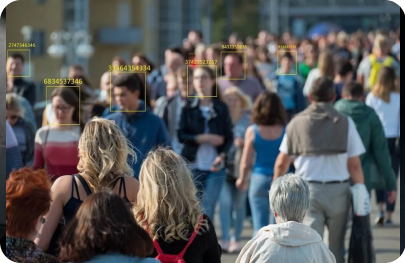Enhancing Mobile Surveillance Trailers with Facial Recognition Security
In an era where security concerns are constantly evolving, the need for advanced surveillance solutions is more pressing than ever. Mobile surveillance trailers have become an essential tool for law enforcement, event management, and private security companies. By incorporating facial recognition security, these trailers can offer a new level of security and efficiency. In this blog post, we’ll explore how facial recognition security enhances mobile surveillance trailers and the benefits it brings to various applications.
The Evolution of Mobile Surveillance Trailers
Mobile surveillance trailers are versatile, self-contained units equipped with cameras, communication systems, and often, their own power sources. They are designed to be quickly deployed to various locations, providing a flexible and reliable surveillance solution. These trailers have been used in a wide range of scenarios, including:
- Public Events: Ensuring the safety of attendees at concerts, festivals, and sports events.
- Construction Sites: Monitoring valuable equipment and deterring theft.
- Law Enforcement: Assisting in crowd control and monitoring high-crime areas.
- Emergency Response: Providing situational awareness during natural disasters and other emergencies.
These trailers have proven invaluable in providing temporary and flexible security solutions. They can be moved and set up quickly, adapting to the specific needs of each situation. However, as security challenges become more sophisticated, so must the technology that we use to combat them.
Integrating Facial Recognition Technology
Facial recognition technology uses advanced algorithms to identify and verify individuals based on their facial features. When integrated into mobile surveillance trailers, this technology can significantly enhance the capabilities of these units. Here’s how:
Real-Time Identification: Facial recognition allows for the real-time identification of individuals. This is particularly useful in situations where quick decision-making is crucial, such as at large public gatherings or in high-crime areas. Security personnel can be alerted immediately when a person of interest or a known threat is identified, allowing for a swift response.
Automated Alerts: The system can automatically send alerts to security personnel if a person of interest or a known threat is detected. This helps in proactive threat management and reduces response time. Automated alerts ensure that no suspicious activity goes unnoticed, even if security staff is occupied with other tasks.
Improved Access Control: At construction sites or other secured areas, facial recognition can be used to ensure that only authorized personnel are allowed access. This reduces the risk of unauthorized entry and potential security breaches. By automating access control, businesses can maintain a higher level of security without the need for additional personnel.
Enhanced Data Analytics: Facial recognition systems can gather and analyze data on the movement and behavior of individuals within a monitored area. This information can be invaluable for law enforcement and event organizers in understanding crowd dynamics and identifying potential security risks.
Benefits of Facial Recognition in Mobile Surveillance Trailers
The integration of facial recognition technology into mobile surveillance trailers offers several key benefits:
Increased Efficiency: Automated identification and alerts reduce the need for constant human monitoring, allowing security personnel to focus on other critical tasks. This can lead to a more efficient allocation of resources and better overall security management.
Scalability: Facial recognition systems can be easily scaled to monitor multiple locations simultaneously, making them ideal for large events or widespread surveillance operations. This scalability ensures that the technology can grow and adapt alongside the security needs of an organization.
Deterrence: The presence of advanced surveillance technology can act as a deterrent to criminal activity, enhancing the overall security of the area. Knowing that they are being monitored by sophisticated systems can discourage potential wrongdoers from engaging in illicit activities.
Cost-Effective: By improving the efficiency of security operations, facial recognition technology can help reduce overall costs associated with surveillance and security management. Automated systems can lower the need for extensive security personnel, leading to significant cost savings over time.
Challenges and Considerations
While the benefits are substantial, it is important to consider some of the challenges and ethical considerations associated with facial recognition technology:
Privacy Concerns: The use of facial recognition raises significant privacy issues. It is crucial to implement clear policies and safeguards to protect individuals’ privacy rights. Transparency with the public about how data is collected, used, and stored is essential to maintaining trust.
Accuracy and Bias: Ensuring the accuracy of facial recognition systems and addressing potential biases in the technology are critical to maintaining public trust and avoiding false positives or negatives. Continuous testing and improvement of the algorithms can help mitigate these issues.
Regulatory Compliance: Staying compliant with local and international regulations regarding the use of surveillance technology is essential to avoid legal complications. Organizations must stay informed about the legal landscape and adapt their practices accordingly to ensure compliance.
Conclusion
Facial recognition security technology has the potential to revolutionize the way mobile surveillance trailers operate, providing enhanced security and efficiency across various applications. By addressing the challenges and ethical considerations, we can harness the power of this technology to create safer environments and more effective security solutions. As the technology continues to evolve, we can expect to see even more innovative uses for facial recognition in mobile surveillance and beyond.
In summary, the integration of facial recognition technology into mobile surveillance trailers represents a significant advancement in security solutions. By leveraging real-time identification, automated alerts, and enhanced data analytics, these trailers can provide unparalleled protection and efficiency. However, it is crucial to address privacy concerns, ensure accuracy, and comply with regulations to fully realize the potential of this technology. With the right approach, facial recognition security can play a vital role in creating safer communities and more secure environments.



